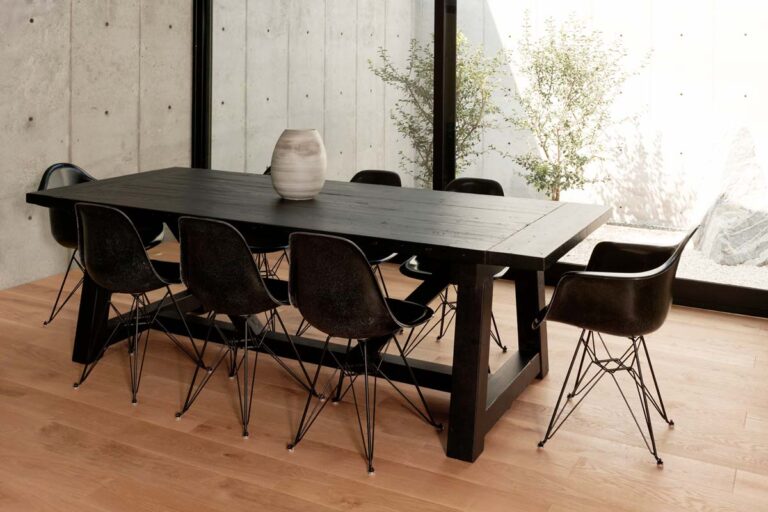Discover the differences between solid parquet and engineered parquet
The choice between engineered and solid wood flooring depends on individual needs and preferences. Solid wood parquet offers natural beauty and durability, while engineered parquet is made up of several layers and is more cost-effective. The most significant difference is in their response to humidity and temperature. While solid wood flooring can swell and shrink in width with changes in wood moisture, engineered wood flooring remains stable. However, the ability to regulate the indoor climate and absorb pollutants is a major advantage of real wood floors over laminate floors. All in all, investing in a durable real wood floor is well worth it! When it comes to choosing the right wood floor, quality should always be considered, as it will add value to your home and give it warmth and character.
Solid parquet consists of real wood
It is a traditional choice known for its longevity. The fact that solid wood floors can be sanded several times and often last a lifetime makes them an investment in your home.
Engineered parquet, on the other hand, is made up of several layers of different materials, such as plywood or MDF (medium density fibreboard), which are glued together. It is a cost-effective alternative to solid wood. However, it does not have the durability of real wood.
Another important difference is thermal conductivity, temperature and humidity.
Solid wood flooring has a better value here than finished parquet. This means lower heating costs, especially when combined with underfloor heating. What is more, solid wood flooring is completely neutral when exposed to high temperatures such as underfloor heating or sunlight – for a lifetime. The situation is different with prefinished parquet: Here there is a risk of damage or even destruction due to high temperatures. Behaviour towards moisture is another difference. Whereas solid wood flooring can swell and shrink in width due to fluctuations in the wood’s moisture content, engineered parquet remains stable.
It is clear that both solid and engineered parquet have their advantages and disadvantages. Choosing the right floor therefore depends on individual needs and preferences: If the natural look is important to you and you are prepared to deal with possible fluctuations due to humidity, solid wood flooring is the right choice, not least because of its higher thermal stability and faster heat transfer. However, if dimensional stability in the event of humidity fluctuations and lower resistance to temperature changes are a priority, prefinished parquet may be the better option.
The biggest advantage of solid wood flooring is that it regulates the indoor climate
The total volume of the wood allows it to ‘breathe’ with the air in the room. This means that they release moisture when the air is too dry and absorb moisture when the air is too humid. This characteristic has a positive effect on the indoor climate: thanks to their regulating function, solid wood floors create a pleasant atmosphere in the home. This creates a cosy feeling in the home by balancing dry heating air with the release of moisture.
Another advantage of solid wood flooring is that it can absorb pollutants from the air – such as cigarette smoke or other unpleasant odours – and store them until the next time the room is aired. In finished parquet flooring, on the other hand, the room climate is regulated only by the thin top layers. So when it comes to creating a harmonious indoor environment and keeping pollutants out, solid wood flooring offers clear advantages over engineered wood flooring.
Another important difference between these two options is the price
While engineered parquet tends to be cheaper than more expensive solid parquet, there are many different types of parquet on the market at different prices – so you should be able to find something to suit your budget. However, remember that engineered wood is not as durable as solid wood and may need to be replaced more often.
Whichever choice you make, quality should always be considered when choosing the right parquet. A high quality wooden floor can add value to your home and add warmth and character, whether you choose real wood parquet or a finished product!
Read more articles in our “FEEL the WOOD” blog and be inspired.








